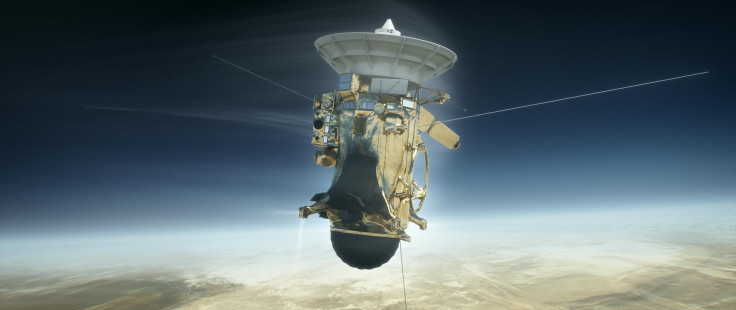Cassini Grand Finale News: Why It’s Being Destroyed, When Did It Launch?
NASA’s Cassini spacecraft has only a few more hours to live. It’s due to finish off its Grand Finale with a fatal plunge into Saturn, destroying itself just a month shy of the 20-year anniversary of its launch.
Anyone who feels bad for the spacecraft should keep in mind that it defied the odds to eve make it to this point. As NASA notes, Cassini originally embarked on a four-year mission but scientists extended its tour two times. The second time was in 2010, when its new agenda included using up all of its fuel while flying around Saturn and past its many moons.
In recent months it has been on a sort of farewell tour dubbed the Grand Finale, during which it took almost two dozen dives between Saturn and its rings to observe the inside of that gap for the first time. No spacecraft had ever before made that trek into the great unknown gap and scientists weren’t entirely sure how treacherous the trip would be or whether the spacecraft would make it out alive. Cassini came out unscathed, however, and sent back photos of the journey before going back for another 21 dives over the last four months.
Instead of having Cassini slowly fade away into the blackness of space or potentially crash into and contaminate one of Saturn’s moons like Enceladus or Titan, which scientists want to continue studying and exploring for potential life and habitability, the spacecraft will plunge into Saturn’s atmosphere. It will burn up and disintegrate, sending back data about its final trip, including the composition of the planet’s upper atmosphere, “for as long as its small thrusters can keep the spacecraft's antenna pointed at Earth,” NASA said. This spacecraft will be faithful to Earth until the very end.
Cassini launched in October 1997 and took seven years to arrive in Saturn’s neighborhood of the outer solar system. One of its early tasks was to release the European Space Agency’s Huygens probe, which many people may forget was aboard the spacecraft. Huygens was dropped onto Titan in 2005, becoming the first manmade object to land on a body in the outer solar system. The probe sent back data about its descent to the surface to Cassini, which relayed that back to Earth. Huygens spent a total of about three and a half hours exploring Titan’s atmosphere and surface before its battery power died and Cassini was left all alone.

During the last 13 years, Cassini has collected images and data that give us new views of many worlds in our solar system, including Saturn itself as well as the largest moon Titan; the potentially extraterrestrial life-supporting Enceladus; and the alien saucer-looking Atlas. It has discovered tiny moons called “moonlets” barreling through Saturn’s rings and showed us what Earth and our own moon look like to a faraway observer.
All that data and all of the amazing images it has relayed back to Earth will mean that any details Cassini manages to collect and transmit during its final plunge will be just one small piece of its legacy. NASA said, “Although the spacecraft may be gone after the finale, its enormous collection of data about Saturn — the giant planet itself, its magnetosphere, rings and moons — will continue to yield new discoveries for decades.”
© Copyright IBTimes 2024. All rights reserved.





















